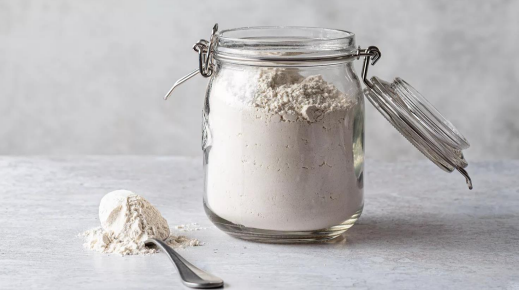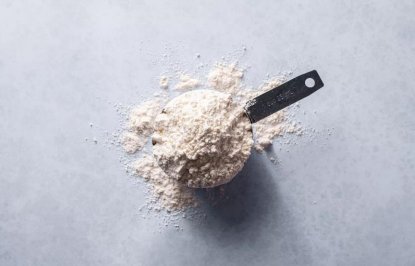WHEAT FLOUR QUALITY
Wheat flour is a powder made from grinding wheat; making is usable for human
consumption. There are different types of wheat flour, distinguished by the amount of
gluten they contain, their colour, the parts of the grain used, and the type of wheat.
Our flours are produced from wheat that is either hard, high in protein (strong flours), which has a greater gluten level, or soft, low in protein (weak flours), which has a lower gluten content.
Our flours are produced from wheat that is either hard, high in protein (strong flours), which has a greater gluten level, or soft, low in protein (weak flours), which has a lower gluten content.
ALL-PURPOSE FLOUR
The gluten concentration of all-purpose flour is designed to be moderate, at about 12
percent or thereabouts. This makes it a good all-purpose middle-of-the-road flour that
can be used to bake everything from delicate cakes and pastries to crusty bread and
cookies.
All-purpose flour should weigh approximately 4.5 ounces, or 125 grams, per sifting cup.
All-purpose flour should weigh approximately 4.5 ounces, or 125 grams, per sifting cup.
BREAD FLOUR
Strong flours like bread flour have a high gluten level, often between 13 and 14
percent. Bread flour has a gritty texture and a somewhat off-white colour. For
manufacturing crusty bread and rolls, pizza dough, and other similar goods, bread
flour is utilized.
The approximate weight of one cup of bread flour is 5 ounces (140 grams).
The approximate weight of one cup of bread flour is 5 ounces (140 grams).

CAKE FLOUR
Cake flour, which is made from soft wheat, contains between 7.5 and 9 percent less
gluten. It is noticeably whiter in colour and has grains that are significantly finer than
bread flour. For tender cakes and pastries, its fine, soft texture is preferred.
The weight of one sifted cup of cake flour is approximately 3.5 ounces, or 99 grams.
The weight of one sifted cup of cake flour is approximately 3.5 ounces, or 99 grams.

PASTRY FLOUR
With 9–10% gluten, pastry flour is slightly more robust than cake flour. It can be used
for softer yeast doughs such biscuits, muffins, cookies, and pies. Compared to cake
flour, it is slightly more off-white in colour.
Just over 3.5 ounces or 101 grams will make up one sifting cup of pastry flour.
Just over 3.5 ounces or 101 grams will make up one sifting cup of pastry flour.

SELF-RISING FLOUR
Strangely, self-rising flour. It is regular all-purpose flour with salt and baking powder
added. The biggest issue is that there is no way to manage how much baking powder
is in it, despite the fact that it was designed to be convenient.
The baking powder in the flour will quickly lose its potency as a rising agent when kept in your pantry.
The baking powder in the flour will quickly lose its potency as a rising agent when kept in your pantry.

WHOLE WHEAT FLOUR
There are two types of whole wheat flour: white whole wheat flour and whole wheat
flour made entirely of whole grains. Red wheat grain that has been hulled is used to
make flour that is 100 percent whole wheat. It offers greater fibre and other nutrients
compared to all-purpose flour. Generally speaking, it has a shorter shelf life than allpurpose flour and results in heavier bread and baked items. For a lighter texture and
better rising, all-purpose flour is frequently used with whole wheat flour. White whole
wheat flour, which is prepared from hulled white spring wheat, is lighter in colour and
has a milder flavour than whole wheat flour.
Whole wheat flour weighs 4 ounces, or approximately 113 grams, per cup.
Whole wheat flour weighs 4 ounces, or approximately 113 grams, per cup.

